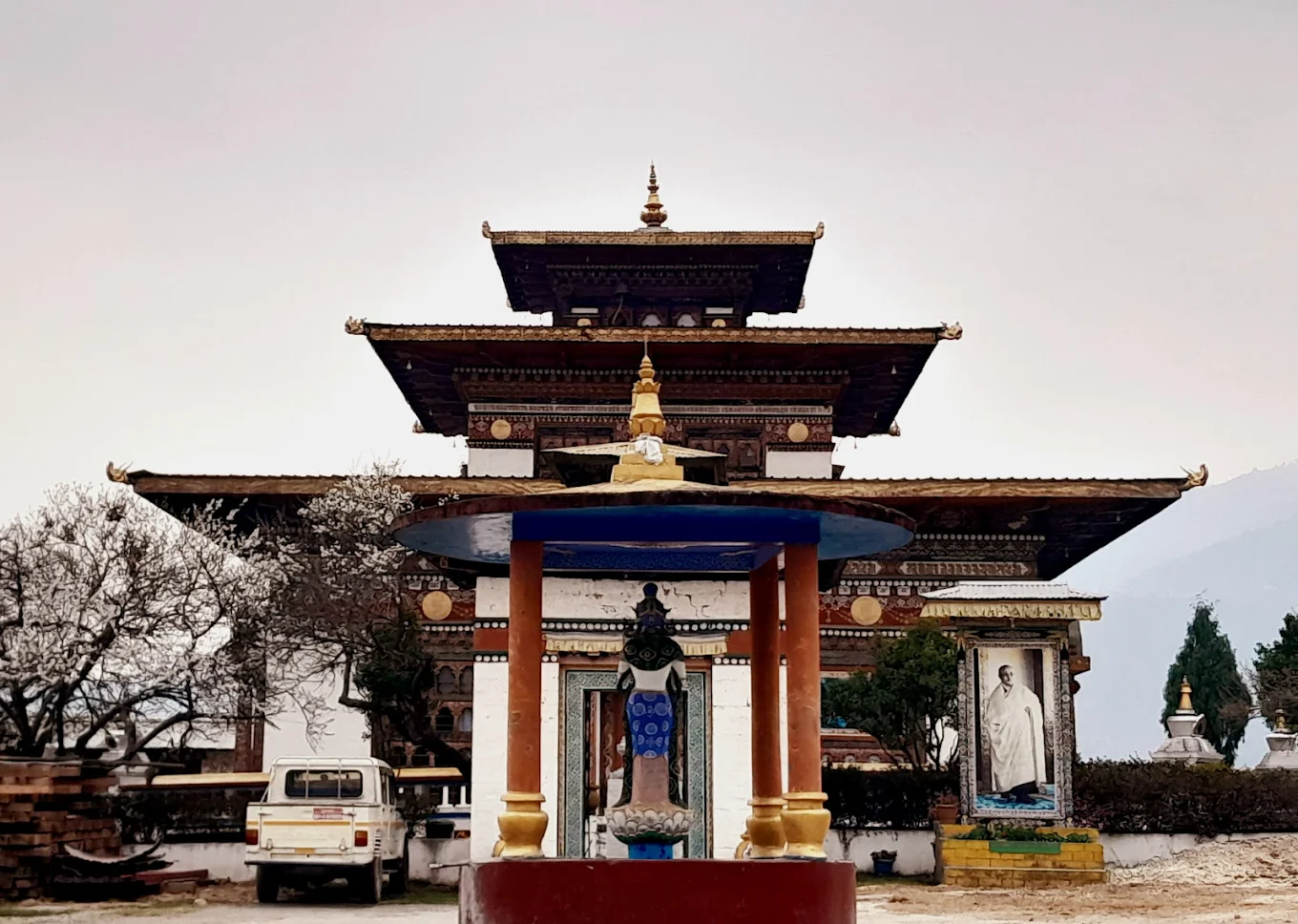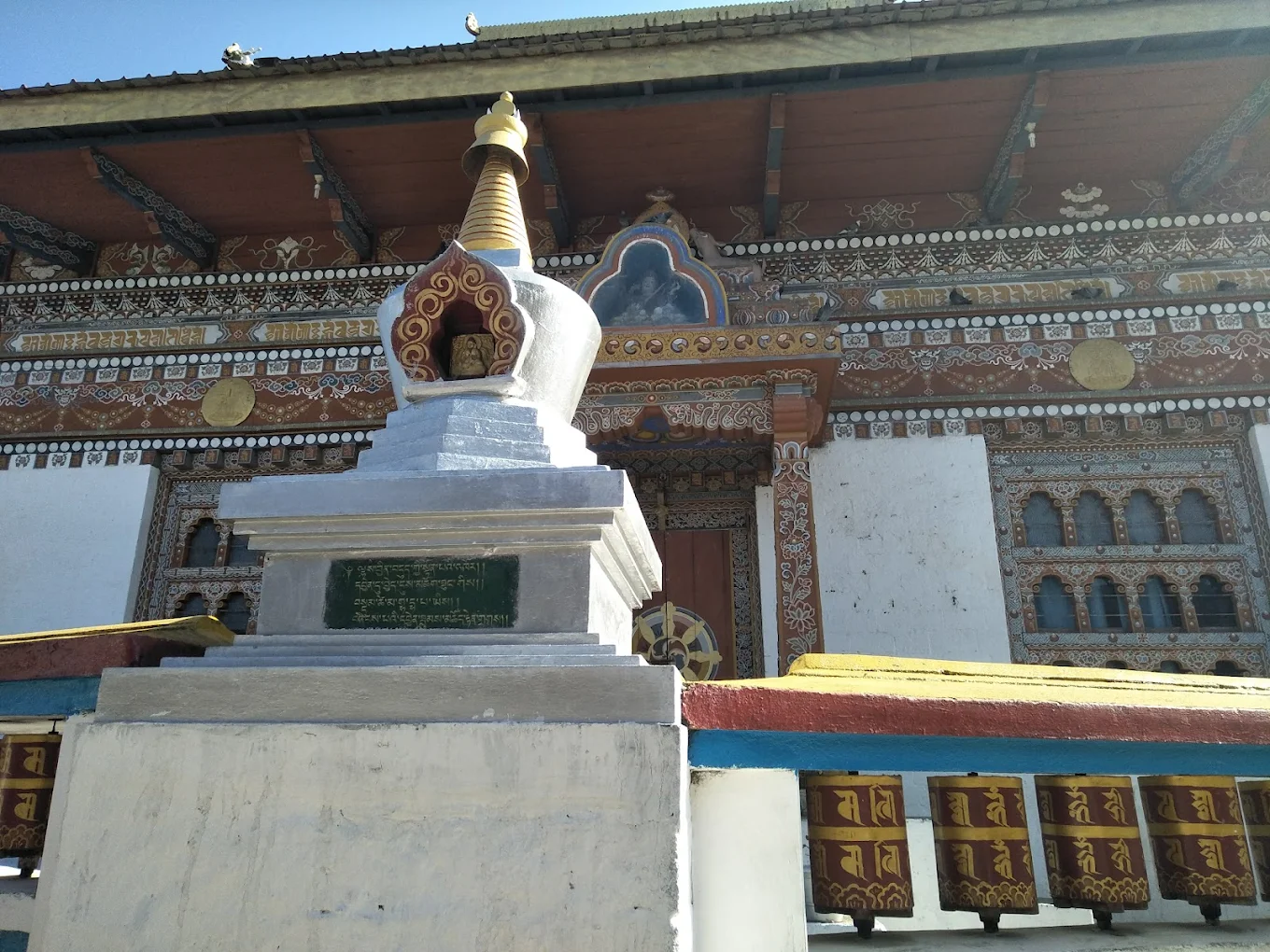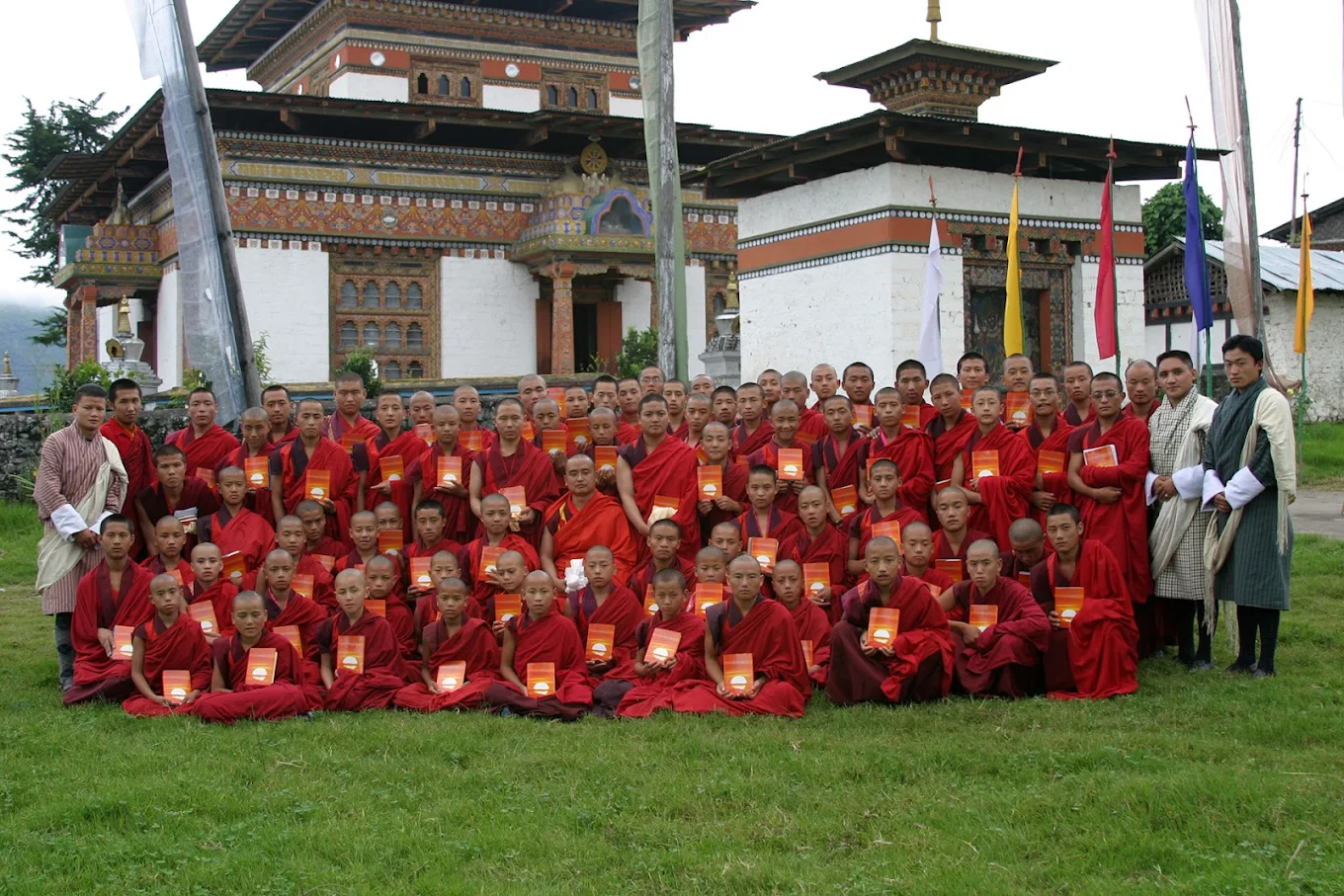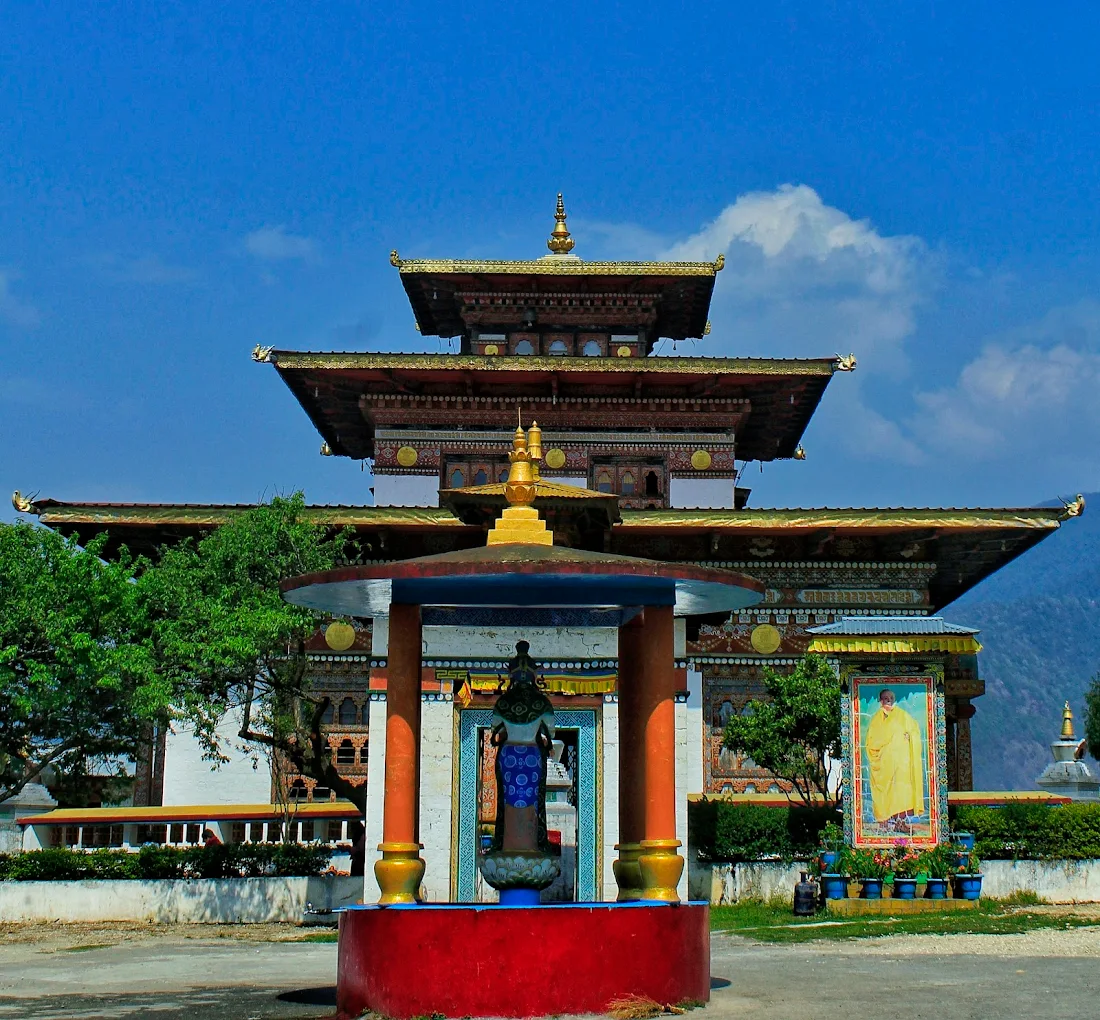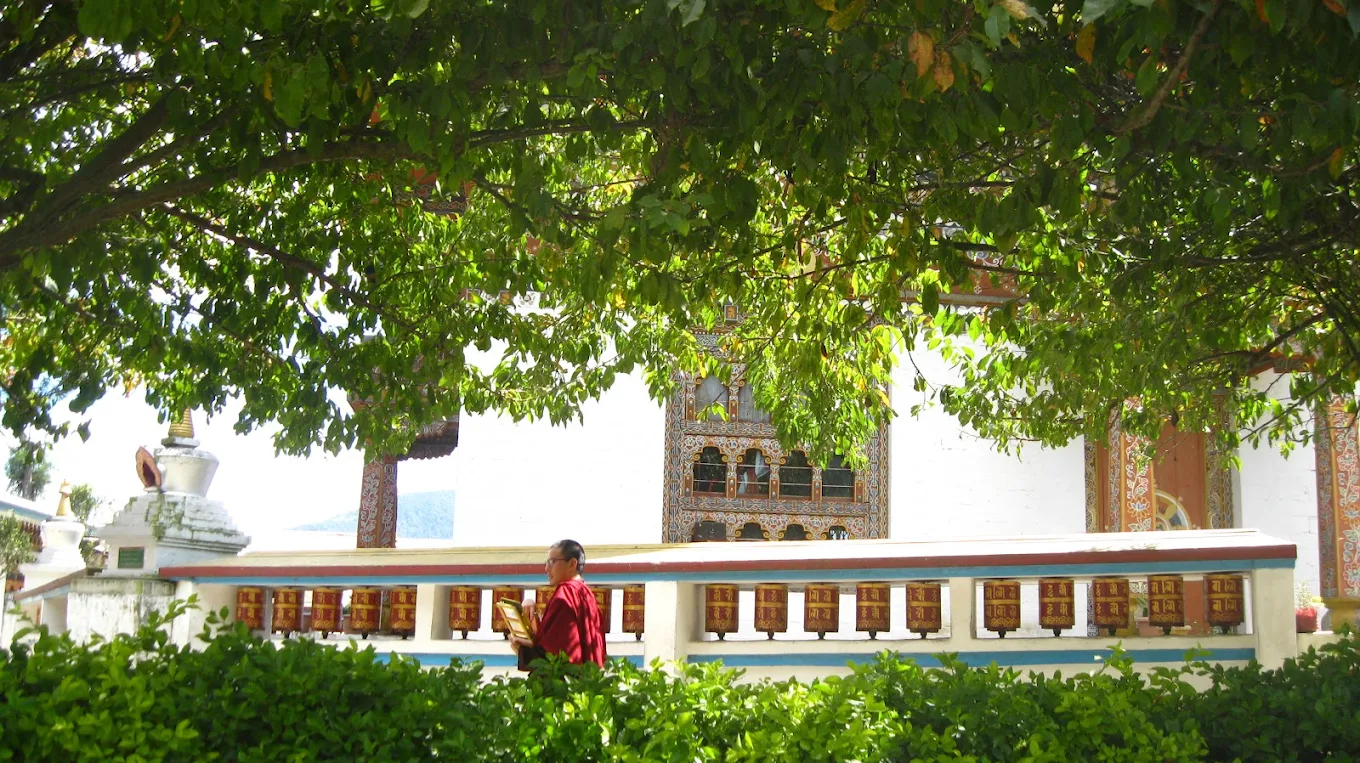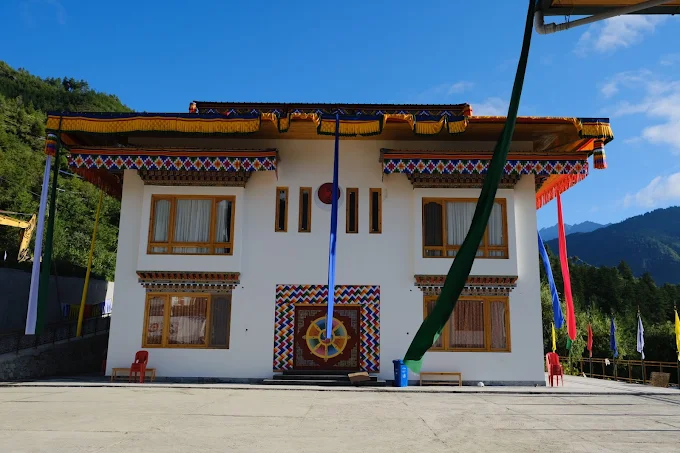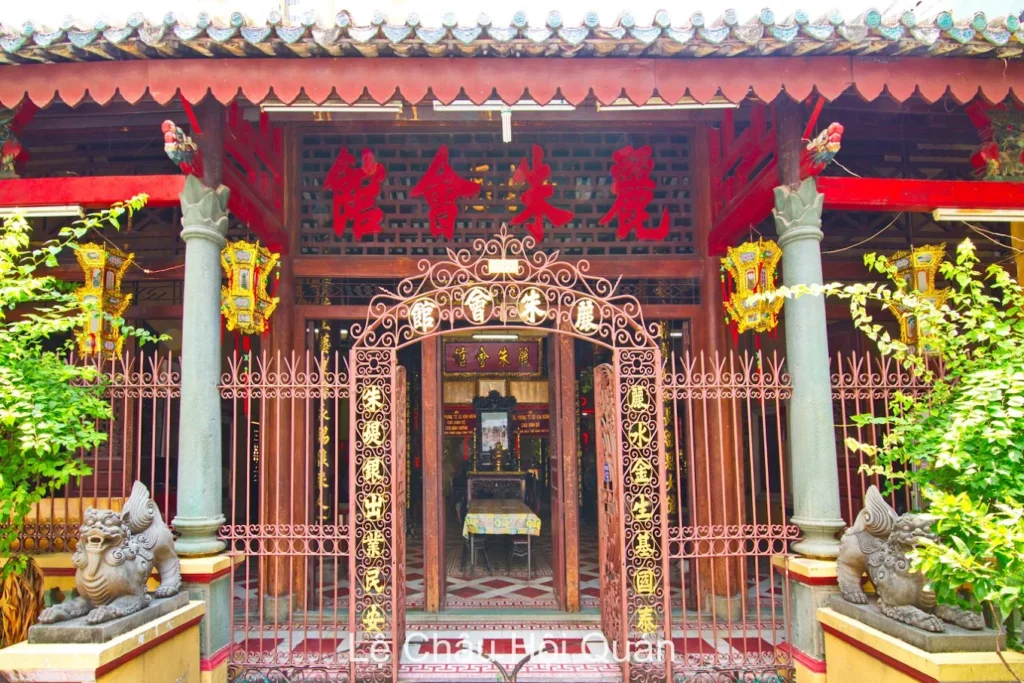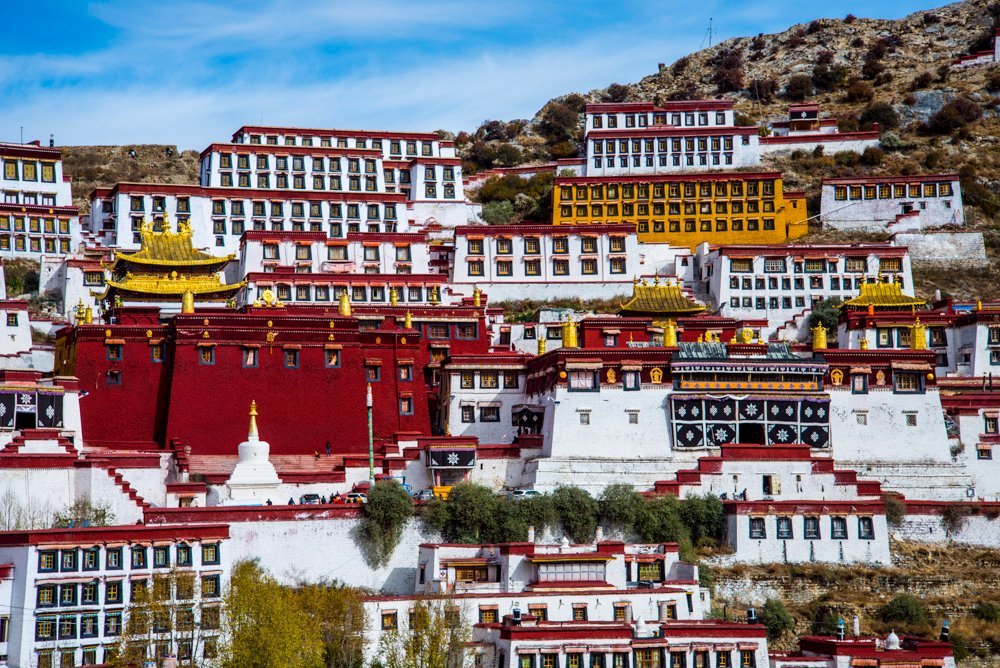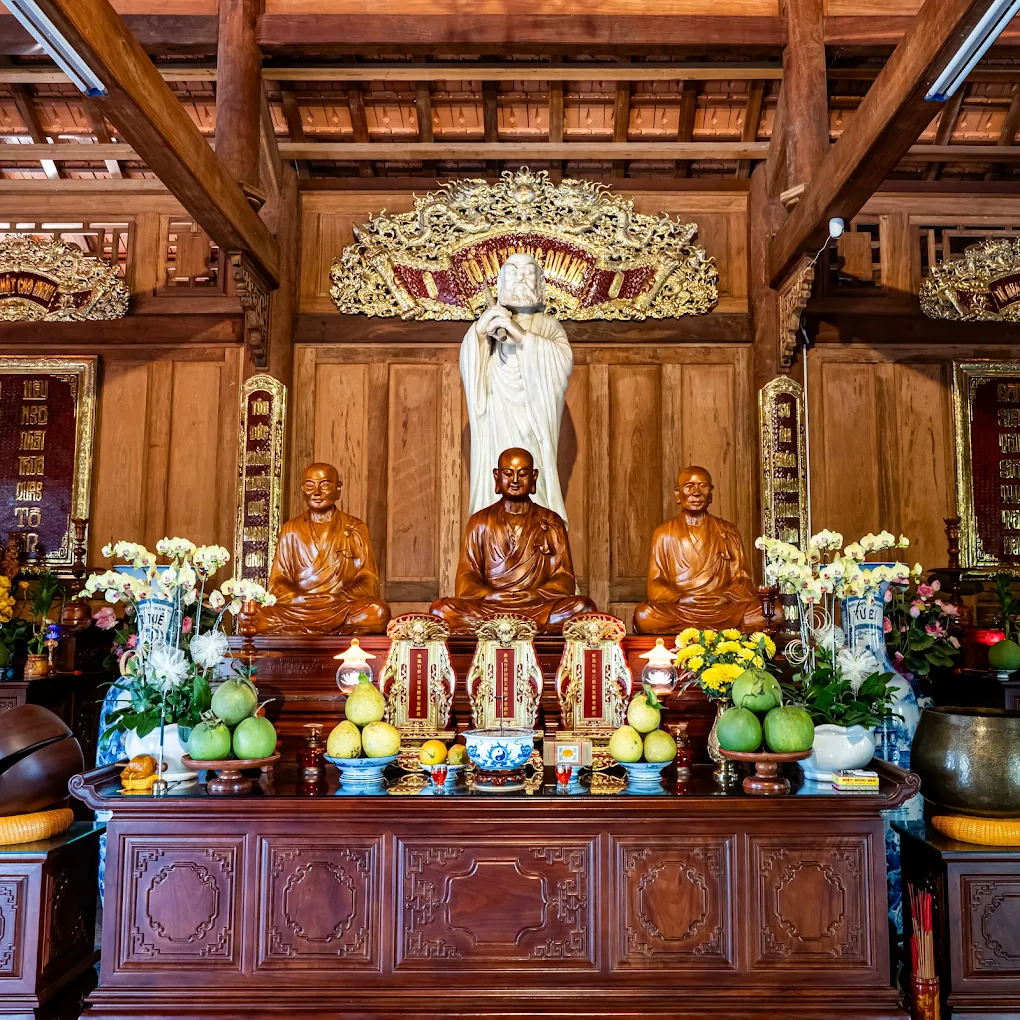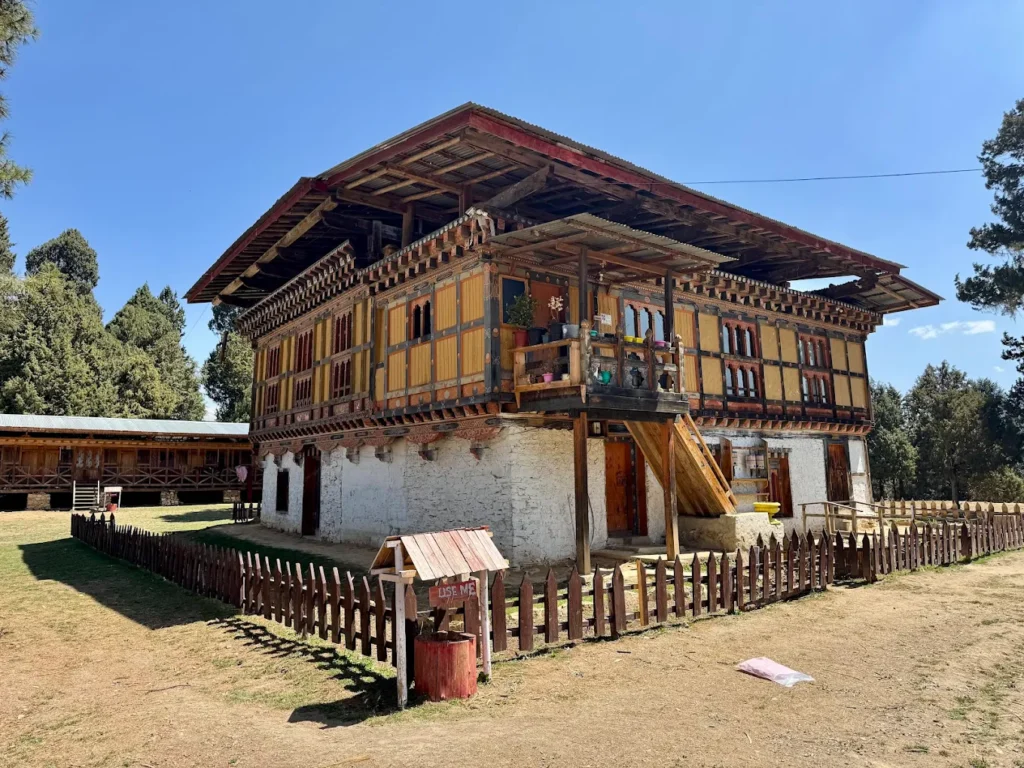Kanglung Zangdo Pelri: Sacred Heart of Trashigang’s Nyingma Scholarship
As mist lifts from Trashigang’s eastern hills, Kanglung Zangdo Pelri gleams in Kanglung village, its whitewashed temple crowned by a golden chorten catching the dawn. Within, a bronze Guru Rinpoche (Padmasambhava) gazes beside Shakyamuni Buddha, their forms bathed in butter lamp glow as monks chant Nyingma sutras. In the adjacent Thubten Choekhoring Shedra, young scholars debate Dzogpachenpo (Great Perfection) texts, their voices echoing through the courtyard. During Tshechu, prayer flags flutter above masked dancers, honoring Bhutan’s oldest Buddhist lineage. Nestled near Sherubtse College, Bhutan’s first academic hub, this temple serves as the spiritual core of Kanglung’s monastic college, drawing Sharchop devotees and students. Rooted in Trashigang’s verdant slopes, it blends meditation, scholarship, and ritual, inviting seekers to a sanctuary where Bhutan’s Nyingma heritage thrives.
Overview and Significance
Kanglung Zangdo Pelri, perched in Kanglung village, Trashigang, stands as the spiritual heart of Thubten Choekhoring Shedra, a Nyingma bastion of monastic learning. This temple weaves devotion, education, and community, embodying eastern Bhutan’s sacred legacy.
Introduction to Kanglung Zangdo Pelri
Kanglung Zangdo Pelri rises within the Thubten Choekhoring Shedra complex, its white walls and golden chorten a serene emblem of Nyingma Buddhism, Bhutan’s oldest school, rooted in Dzogpachenpo teachings of innate wisdom. As the temple of Kanglung’s monastic college, it anchors a historic educational hub near Sherubtse College, Bhutan’s first university. Serving Sharchop villagers and monks, its prayer hall and chorten foster enlightenment through chant and contemplation. Set against Trashigang’s forested hills, it offers a window into Bhutan’s Nyingma soul.
Historical Journey
The temple’s story intertwines with Kanglung’s shedra:
- Shedra Roots: Thubten Choekhoring, likely established pre-20th century, grew as a Nyingma learning center.
- Temple Role: Zangdo Pelri, the shedra’s spiritual core, likely predates modern expansions, tied to local Nyingma practices.
- Educational Hub: Its proximity to Sherubtse College (1964) cements Kanglung’s scholarly legacy.
- Modern Continuity: The shedra trains monks, with the temple hosting rituals.
Cultural Significance
The temple shapes Trashigang’s spiritual fabric:
- Nyingma Anchor: Transmits Dzogpachenpo, guiding meditation.
- Community Heart: Tshechu unites Kanglung’s Sharchop villagers.
- Scholarly Symbol: Links monastic and secular education.
Unique Legacy
As the shedra’s spiritual core, its chorten and prayer hall define Kanglung’s sanctity.
Community and Global Impact
- Local Ties: Hosts rituals and educates monks, binding Kanglung.
- Regional Draw: Attracts eastern Bhutanese devotees.
- Cultural Note: Its shedra role inspires Bhutanese education.
Historical Anecdotes
- Early monks debated texts under Kanglung’s banyans, shaping the shedra.
- Tshechu dancers once blessed Sherubtse’s founding, linking temple and college.
Social Role
Rituals and teachings knit spiritual and social threads.
Artistic Influence
Its murals inspire Trashigang’s thangka artisans.
The temple’s history shapes its form, where chorten and murals frame a space of reverence.
Architectural and Spiritual Features
Kanglung Zangdo Pelri’s whitewashed temple and golden chorten blend Nyingma simplicity with Bhutanese craft, its shedra halls alive with debate. This section unveils its design and sacred spaces.
Iconic Design
The temple’s stone walls, topped with a wooden roof, rise beside a gleaming chorten, its spire catching Trashigang’s sun. The courtyard, fringed by prayer flags, overlooks Kanglung’s rice fields, a serene retreat.
Key Structures
- Main Temple (Lhakhang): A compact hall with vibrant murals and altars.
- Chorten: A golden stupa at the entrance, a meditative focal point.
- Shedra Halls: Adjacent buildings with wooden desks for scholars.
- Courtyard: A packed-earth space for rituals and debates.
Worshipped Statues/Deities
- Guru Rinpoche: A bronze statue honors Nyingma’s founder.
- Shakyamuni Buddha: A central icon depicts enlightenment.
Materials and Techniques
Stone walls and timber beams, with mineral-pigment murals, reflect Bhutanese artistry.
Signature Elements
The golden chorten and Guru Rinpoche statue anchor the temple’s sanctity.
Lesser-Known Features
- Sutra Carvings: Altar beams bear Dzogpachenpo verses.
- Prayer Wheels: Line the courtyard, spun by monks.
Preservation Efforts
Since the 2000s, monks protect murals from Trashigang’s humidity.
Environmental Integration
The temple’s perch ties it to Kanglung’s fields, a tranquil haven.
Artisan Narratives
Trashigang painters crafted murals, preserving Nyingma iconography.
Symbolic Details
The chorten signifies enlightenment; lotus murals evoke purity.
Landscape Integration
The field view enhances meditative calm, grounding the temple.
These spaces cradle the temple’s rituals, inviting monks into Nyingma’s meditative heart.
Rituals and Practices
Kanglung Zangdo Pelri’s rituals, rooted in Nyingma’s Dzogpachenpo, blend chant and contemplation, fostering wisdom. This section explores its ceremonial pulse.
Daily Sacred Rites
- Sutra Chanting: Monks recite Nyingma texts at dawn.
- Offerings: Butter lamps and incense honor Guru Rinpoche.
- Meditation: Dzogchen sessions focus on innate clarity.
Unique Practices
Weekly shedra debates on Dzogpachenpo texts sharpen monastic insight.
Festival Traditions
- Tshechu: In October, masked dances honor Longchen Rabjam.
- Losar: New Year prayers bless Kanglung’s community.
Visitor Engagement
Guests may join chants or observe debates, guided by monks.
Spiritual Community Roles
Monks lead rites; Sharchop villagers support festivals.
Interfaith Connections
Exchanges with Kagyu monks reflect Bhutanese harmony.
Ritual Symbolism
- Butter Lamps: Light signifies wisdom.
- Prayer Flags: Colors balance elements.
Seasonal Variations
Tshechu intensifies in autumn; monsoon retreats deepen meditation.
Monastic/Community Life
Monks study texts; villagers tend the courtyard.
These rituals guide visitors to the temple’s philosophical depths.
Visitor Information
Kanglung Zangdo Pelri welcomes travelers to Trashigang’s hills, offering practical details to engage with its sacred core.
Navigating to Kanglung Zangdo Pelri
In Kanglung village, a 10-minute walk from Sherubtse College, the temple’s chorten rises near Trashigang-Kanglung road, 22 km from Trashigang town.
Address of Kanglung Zangdo Pelri
Kanglung, Kanglung Gewog, Trashigang District, Bhutan
Visiting Hours and Etiquette
- Hours: Open daily from 7:00 AM to 5:00 PM, extended during Tshechu.
- Etiquette: Dress modestly; remove shoes in the temple; avoid photographing altars.
Transport Options
- Car: A 30-minute drive from Trashigang via taxi.
- Bus: Trashigang-Kanglung buses stop near Sherubtse, then a short walk.
- Hiking: A 10-minute trail from Kanglung village.
Accessibility and Safety
- Accessibility: The courtyard is flat; steps limit temple access.
- Safety: Kanglung is safe, but carry water for the walk.
Amenities and Surroundings
Restrooms at the shedra; Kanglung village offers tea stalls.
Immersive Tips
Visit in October for Tshechu dances or join morning meditations.
Nearby Cultural Experiences
- Sherubtse College: 500 m away, Bhutan’s first university.
- Yonphula Lhakhang: 10 km away, a Nyingma temple.
Photography Tips
Frame the chorten at sunrise; respect altar restrictions.
The temple’s gates open to its Nyingma philosophy, where scholarship and faith unfold.
Cultural and Spiritual Insights
Kanglung Zangdo Pelri’s essence lies in its Nyingma roots and Kanglung’s spirit, offering insights into Bhutan’s sacred depth.
Religious Philosophy
Nyingma’s Dzogpachenpo teaches innate wisdom, guiding monks to liberation.
Environmental Spirituality
Kanglung’s fields reflect nature’s sanctity, a Nyingma tenet.
Artistic Symbolism
Guru Rinpoche’s statue embodies enlightenment; chorten signifies purity.
Community Resilience
The shedra’s scholars uplift Kanglung, fostering devotion.
Environmental Stewardship
Villagers plant trees, honoring Bhutan’s eco-ethos.
Meditative Practices
Dzogchen sessions cultivate clarity, open to visitors.
Cultural Narratives
Longchenpa’s legacy inspires Tshechu tales, binding Sharchops.
Historical Context
The temple ties to Trashigang’s Nyingma spread.
These insights weave a reflection on the temple’s enduring presence.
Conclusion
Kanglung Zangdo Pelri stands as the sacred heart of Trashigang’s Nyingma scholarship, its golden chorten and Guru Rinpoche statue a testament to Thubten Choekhoring Shedra’s legacy. Tshechu’s masked dances and Dzogchen meditations pulse with wisdom, weaving serenity into Kanglung’s fields. From its prayer hall to the shedra’s debates, it fosters enlightenment amid Trashigang’s hills. As a spiritual and scholarly beacon, it bridges Bhutan’s ancient lineage with its vibrant present, inviting travelers to pause where chants echo timeless devotion.
